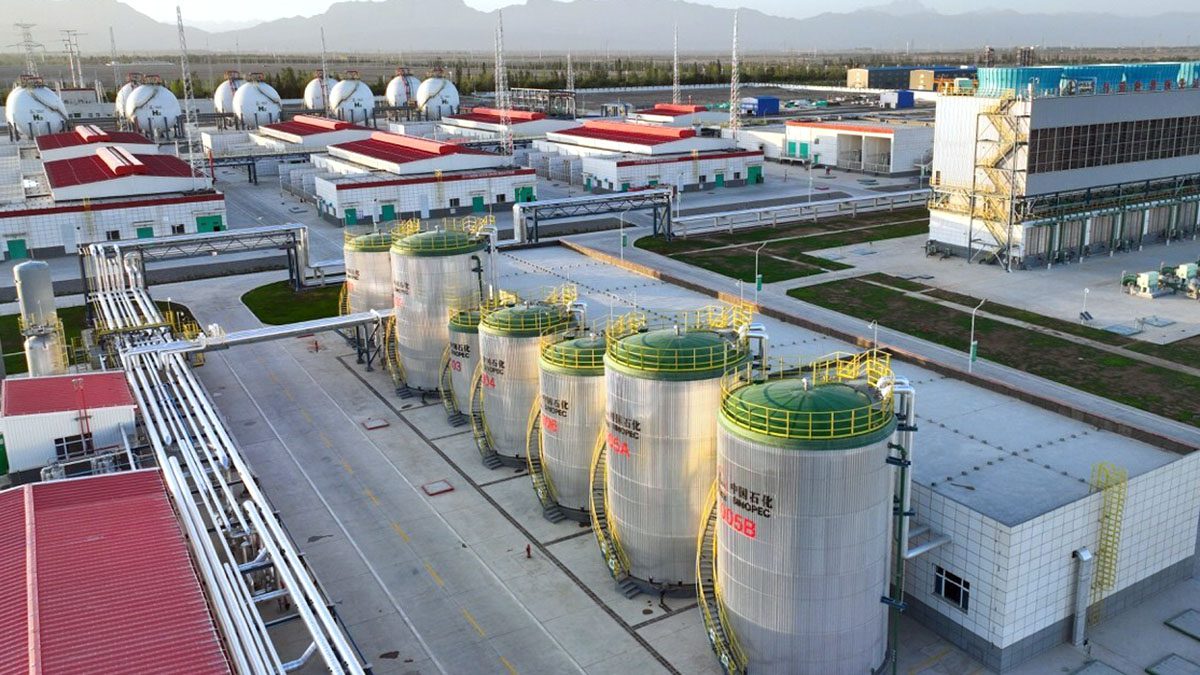China Petroleum & Chemical Corporation (Sinopec) has achieved a significant milestone in the realm of renewable energy with the completion and operationalization of the Sinopec Xinjiang Kuqa Green Hydrogen Pilot Project, the largest photovoltaic green hydrogen production endeavour in the nation to date. This achievement marks a substantial stride forward in China’s endeavours to implement large-scale industrial applications of green hydrogen, further propelling its sustainable energy goals.
The newly commissioned project is anticipated to produce an impressive annual output of 20,000 tons of green hydrogen when operating at full capacity. This milestone accomplishment underscores China’s dedication to transitioning towards eco-friendly energy solutions and paves the way for greener and more efficient hydrogen production processes.
The Sinopec Xinjiang Kuqa Green Hydrogen Pilot Project serves as an exemplar of ingenuity and environmental stewardship. The project relies on photovoltaic power generation to produce green hydrogen directly, leveraging the vast solar resources found in the Xinjiang region. The facility encompasses an electrolyzed water hydrogen plant with an annual capacity of 20,000 tons, complemented by a spherical hydrogen storage tank boasting a storage capacity of 2,10,000 standard cubic meters. Additionally, a network of cutting-edge hydrogen transmission pipelines with a capacity of 28,000 standard cubic meters per hour has been established.
One of the groundbreaking aspects of the project lies in its ability to adapt and overcome the challenges associated with fluctuations in new energy power generation. Sinopec has demonstrated its innovative prowess by surmounting obstacles to flexible hydrogen production in the face of varying energy outputs. Moreover, the project has triumphed in localizing the manufacturing of essential equipment and core materials, bolstering China’s self-reliance in the field of green energy technology.
The green hydrogen generated by the Sinopec Xinjiang Kuqa Green Hydrogen Pilot Project will play a pivotal role in supporting the operations of Sinopec Tahe Petrochemical. By replacing conventional natural gas and fossil fuel-based hydrogen production processes, this new initiative embodies the concept of low-carbon modern oil processing while promoting the coupling of green hydrogen in energy systems.
It is estimated that this groundbreaking project will contribute to an annual reduction of approximately 4,85,000 tons of carbon dioxide emissions, reinforcing China’s commitment to sustainable practices and emissions reduction targets. Notably, Sinopec has pursued an ambitious vision that integrates hydrogen transportation and green hydrogen refining. Currently, the company boasts a network of over 100 hydrogen refuelling stations, cementing its position as the world’s largest operator of such facilities.
As part of Sinopec’s broader strategy to foster green hydrogen production and utilization, the corporation has embarked on additional initiatives. Construction on the Ordos green hydrogen project, set to produce an annual output of 30,000 tons, commenced in February 2023. Concurrently, plans are underway for the Ulanqab project, which aims to further consolidate Sinopec’s leadership in the green energy sector.
Aligned with its commitment to the ‘dual-carbon’ objectives, Sinopec is steadfast in its determination to curtail carbon emissions while actively advocating for green and low-carbon development.













